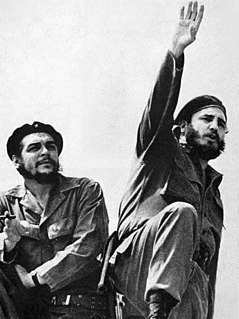 W
WThe aftermath of the Cuban Revolution is a period in Cuban history typically defined as starting in 1959 and ending in 1970. The period encompasses early domestic reforms, growing international tensions, and ending with the failure of the 1970 sugar harvest.
 W
WWilliam Albertson was a 20th-century American leader in the Communist Party of the USA who battled federal and state courts, and who in 1964 was framed by the Federal Bureau of Investigation, which was only discovered posthumously in 1975. His widow made an out-of-court settlement in 1989 with the U.S. Government for $170,000.
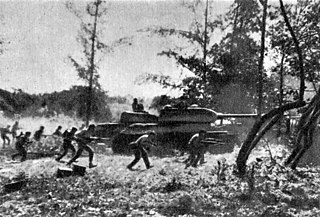 W
WThe Bay of Pigs Invasion was a failed landing operation on the southwestern coast of Cuba in 1961 by Cuban exiles who opposed Fidel Castro's Cuban Revolution. Covertly financed and directed by the U.S. government, the operation took place at the height of the Cold War, and its failure led to major shifts in international relations between Cuba, the United States, and the Soviet Union.
 W
WEarl Russell Browder was an American politician, political activist and leader of the Communist Party USA (CPUSA). Browder was the General Secretary of the CPUSA during the 1930s and first half of the 1940s.
 W
WCalifornia Senate Factfinding Subcommittee on Un-American Activities (SUAC) was established by the California State Senate under authority of paragraph 12.5 (13) of the Standing Rules Committee of the State Senate. The committee was a subcommittee of the general Research Committee of the California State Senate. SUAC was the California equivalent of the House Committee on Un-American Activities.
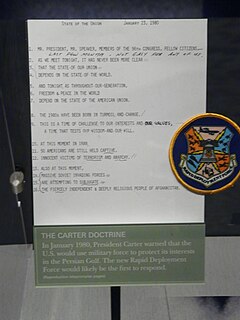 W
WThe Carter Doctrine was a policy proclaimed by President of the United States Jimmy Carter in his State of the Union Address on January 23, 1980, which stated that the United States would use military force, if necessary, to defend its national interests in the Persian Gulf. It was a response to the Soviet Union's intervention in Afghanistan in 1979, and it was intended to deter the Soviet Union, the United States' Cold War adversary, from seeking hegemony in the Persian Gulf region.
 W
WVincent Jen Chin was a Chinese American draftsman who was beaten to death in a racially motivated attack by two white men, Chrysler plant supervisor Ronald Ebens and his stepson, laid-off autoworker Michael Nitz.
 W
WCold War espionage describes the intelligence gathering activities during the Cold War between the Western allies and the Eastern Bloc. Both relied on a wide variety of military and civilian agencies in this pursuit.
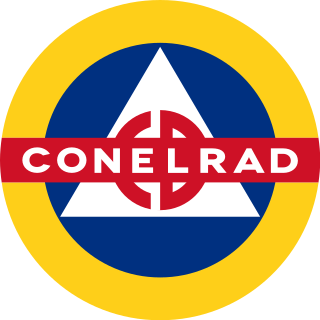 W
WCONELRAD was a method of emergency broadcasting to the public of the United States in the event of enemy attack during the Cold War. It was intended to allow continuous broadcast of civil defense information to the public using radio stations, while rapidly switching the transmitter stations to make the broadcasts unsuitable for Soviet bombers that might attempt to home in on the signals.
 W
WThe Cuban Missile Crisis, also known as the October Crisis of 1962, the Caribbean Crisis, or the Missile Scare, was a 1 month, 4 day confrontation between the United States and the Soviet Union which escalated into an international crisis when American deployments of missiles in Italy and Turkey were matched by Soviet deployments of similar ballistic missiles in Cuba. Despite the short time frame, the Cuban Missile Crisis remains a defining moment in U.S. national security and nuclear war preparation. The confrontation is often considered the closest the Cold War came to escalating into a full-scale nuclear war.
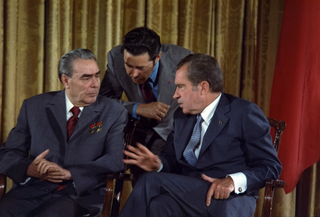 W
WDétente is the relaxation of strained relations, especially political, by verbal communication. The term, in diplomacy, originates from around 1912 when France and Germany tried unsuccessfully to reduce tensions.
 W
WThe Emergency Alert System (EAS) is a national warning system in the United States designed to allow authorized officials to coordinate and disseminate emergency alerts and warning messages to the public via terrestrial and satellite radio and television.
 W
WThe Emergency Broadcast System (EBS), sometimes called the Emergency Broadcasting System or the Emergency Action Notification System (EANS), was an emergency warning system used in the United States. It replaced the previous CONELRAD system and was used from 1963 to 1997, at which point it was replaced by the Emergency Alert System.
 W
WThe Executive Committee of the National Security Council was a body of United States government officials that convened to advise President John F. Kennedy during the Cuban Missile Crisis in 1962. It was composed of the regular members of the National Security Council, along with other men whose advice the President deemed useful during the crisis. EXCOMM was formally established by National Security Action Memorandum 196 on October 22, 1962. It was made up of twelve full members in addition to the president. Advisers frequently sat in on the meetings, which were held in the Cabinet Room of the White House's West Wing and secretly recorded by tape machines activated by Kennedy. None of the other committee members knew the meetings were being recorded, save probably the president's brother, Attorney General Robert F. Kennedy.
 W
WPresident Harry S. Truman signed United States Executive Order 9835, sometimes known as the "Loyalty Order", on March 21, 1947. The order established the first general loyalty program in the United States, designed to root out communist influence in the U.S. federal government. Truman aimed to rally public opinion behind his Cold War policies with investigations conducted under its authority. He also hoped to quiet right-wing critics who accused Democrats of being soft on communism. At the same time, he advised the Loyalty Review Board to limit the role of the Federal Bureau of Investigation (FBI) to avoid a witch hunt. The program investigated over 3 million government employees, just over 300 of whom were dismissed as security risks.
 W
WFallout Protection: What To Know And Do About Nuclear Attack was an official United States federal government booklet released in December 1961 by the United States Department of Defense and the Office of Civil Defense. The first page of the book is a note from then-U.S. Secretary of Defense Robert McNamara explaining that the booklet is the result of the first task he was given when he assumed responsibility for the Federal Civil Defense Program in August 1961. The task, assigned by President John F. Kennedy, was to "give the American people the facts they need to know about the dangers of a thermonuclear attack and what they can do to protect themselves."
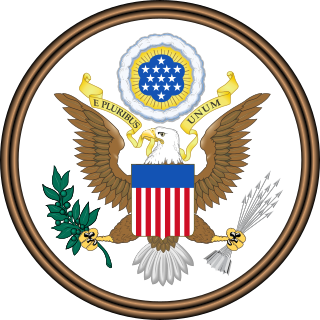 W
WFormer Soviet Union Demilitarization Act of 1992, 22 U.S.C. ch. 68 §§ 5901-5931, is a United States Federal law created to coordinate disarmament efforts with the former Soviet Union. The Act, better known as the National Defense Authorization Act for Fiscal Year 1993, provided legislative authority for the United States Department of Defense supporting armament retooling, chemical demilitarization, and nonproliferation initiatives.
 W
WThe Freedom Bell in Berlin, Germany, is a bell that was given as a gift from Americans to the city of Berlin in 1950 as a symbol of anti-communism, and was inspired by the American Liberty Bell. Since 1950, the bell has been located in the Rathaus Schöneberg, the former city hall of West Berlin.
 W
WThe FRIENDSHIP Act of 1993 was enacted as a law of the United States enhancing prior statutory provisions which govern international relations between the former Republics of the Soviet Union and United States during the Cold War. The Act of Congress reformed United States statutes related to:Armament export controls as related to military technology transfer limitations Continental cultural and educational exchange Cooperative foreign trade relations Diplomatic relations with foreign allies Global environmental shifts Immigration and nationality requirements International products exports Societal propagandization as related to multicultural social ideology
 W
WThe Heavy Press Program was a Cold War-era program of the United States Air Force to build the largest forging presses and extrusion presses in the world. These machines greatly enhanced the US defense industry's capacity to forge large complex components out of light alloys, such as magnesium and aluminum. The program began in 1950 and concluded in 1957 after construction of four forging presses and six extruders, at an overall cost of $279 million. Eight of them are still in operation today, manufacturing structural parts for military and commercial aircraft. They still hold the records for size in North America, though they have since been surpassed by presses in Japan, France, Russia and China.
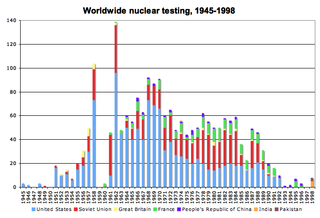 W
WThe application of nuclear technology, both as a source of energy and as an instrument of war, has been controversial.
 W
WThe House Committee on Un-American Activities (HCUA), popularly dubbed the House Un-American Activities Committee (HUAC), and from 1969 onwards known as the House Committee on Internal Security, was an investigative committee of the United States House of Representatives. The HUAC was created in 1938 to investigate alleged disloyalty and subversive activities on the part of private citizens, public employees, and those organizations suspected of having fascist or communist ties. When the House abolished the committee in 1975, its functions were transferred to the House Judiciary Committee.
 W
WThe military history of the United States during the Korean War began in the context of the defeat of Japan by the Allied Powers in World War II which heralded the end to 35 years of Japanese occupation of the Korean Peninsula and led to the peninsula being divided into two zones; a northern zone occupied by the Soviet Union and a southern zone occupied by the United States. After negotiations on reunification failed, the latter became the Republic of Korea or South Korea in August 1948 while the former became the Democratic People's Republic of Korea or North Korea in September 1948.
 W
WThis list of members of the House Un-American Activities Committee details the names of those members of the United States House of Representatives who served on the House Un-American Activities Committee (HUAC) from its formation as the "Special Committee to Investigate Un-American Activities" in 1938 until the dissolution of the "House Internal Security Committee" in 1975.
 W
WThe Marshall Plan was an American initiative passed in 1948 for foreign aid to Western Europe. The United States transferred over $13 billion in economic recovery programs to Western European economies after the end of World War II. Replacing an earlier proposal for a Morgenthau Plan, it operated for four years beginning on April 3, 1948. The goals of the United States were to rebuild war-torn regions, remove trade barriers, modernize industry, improve European prosperity, and prevent the spread of communism. The Marshall Plan required a reduction of interstate barriers, a dropping of many regulations, and encouraged an increase in productivity, as well as the adoption of modern business procedures.
 W
WThe Moscow–Washington hotline is a system that allows direct communication between the leaders of the United States and the Russian Federation. This hotline was established in 1963 and links the Pentagon with the Kremlin. Although in popular culture it is known as the "red telephone", the hotline was never a telephone line, and no red phones were used. The first implementation used Teletype equipment, and shifted to fax machines in 1986. Since 2008, the Moscow–Washington hotline has been a secure computer link over which messages are exchanged by a secure form of email.
 W
WThe Mutual Defense Assistance Act was a United States Act of Congress signed by President Harry S. Truman on 6 October 1949. For US Foreign policy, it was the first U.S. military foreign aid legislation of the Cold War era, and initially to Europe. The Act followed Truman's signing of the Economic Cooperation Act, on April 3, 1948, which provided non-military, economic reconstruction and development aid to Europe.
 W
WThe National Audiovisual Conservation Center, also known as the Packard Campus for Audio-Visual Conservation, is the Library of Congress's audiovisual archive located inside Mount Pony in Culpeper, Virginia.
 W
WThe National Emergency Alarm Repeater (NEAR) was a civilian emergency warning device in the United States. It was a 2–3" (5–7.5 cm) square box designed to plug into a standard power outlet to receive a special signal sent over the electric power transmission lines. Research and testing for the NEAR program was developed in 1956 during the Cold War to supplement the existing siren warning systems and radio broadcasts in the event of a nuclear attack. The advent of the radio Emergency Broadcast System rendered NEAR obsolete, although a severe disadvantage inherent in the Emergency Broadcast System was that it required a television or radio to be turned on for a household to receive the emergency alarm, whereas NEAR did not. Despite this advantage, upon the introduction of the Emergency Broadcast System, stockpiled NEAR repeaters were destroyed by their respective manufacturers.
 W
WThe New Look was the name given to the national security policy of the United States during the administration of President Dwight D. Eisenhower. It reflected Eisenhower's concern for balancing the Cold War military commitments of the United States with the nation's financial resources. The policy emphasised reliance on strategic nuclear weapons as well as a reorganisation of conventional forces in an effort to deter potential threats, both conventional and nuclear, from the Eastern Bloc of nations headed by the Soviet Union.
 W
WNgô Đình Diệm, the President of South Vietnam, made a state visit to the United States, the main ally of his government, in 1957. Diệm received a glowing welcome and was heaped with praise as a leader of a "free country" in the midst of the Cold War. The receptions during the visit were in large part organized by the American Friends of Vietnam (AFV), a lobby group dedicated to resolute US support of South Vietnam and which included many politicians from both major parties. The visit was mainly celebratory and ceremonial, rather than being a policy or planning mission. It was part of a year of travelling for Diệm, as he made a visit to Australia in September, as well as to fellow anti-communist countries South Korea and Thailand.
 W
WThe following is a list of Nike missile sites operated by the United States Army. This article lists sites in the United States, most responsible to Army Air Defense Command; however, the Army also deployed Nike missiles to Europe as part of the NATO alliance, with sites being operated by both American and European military forces. U.S. Army Nike sites were also operational in South Korea, Japan and were sold to Taiwan.
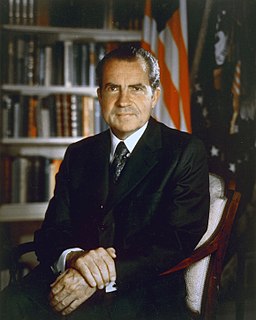 W
WThe Nixon shock was a series of economic measures undertaken by United States President Richard Nixon in 1971, in response to increasing inflation, the most significant of which were wage and price freezes, surcharges on imports, and the unilateral cancellation of the direct international convertibility of the United States dollar to gold.
 W
WNuclear Non-Proliferation Act of 1978, 22 U.S.C. § 3201, is a United States federal law declaring that nuclear explosive devices pose a perilous threat to the security interests of the United States and continued international progress towards world peace and the development of nations.
 W
WThe United States was the first country to manufacture nuclear weapons and is the only country to have used them in combat, with the separate bombings of Hiroshima and Nagasaki in World War II. Before and during the Cold War, it conducted over one thousand nuclear tests and tested many long-range nuclear weapons delivery systems.
 W
WOperation Paperclip was a secret United States intelligence program in which more than 1,600 German scientists, engineers, and technicians were taken from former Nazi Germany to the U.S. for government employment after the end of World War II in Europe, between 1945 and 1959. Conducted by the Joint Intelligence Objectives Agency (JIOA), it was largely carried out by special agents of the U.S. Army's Counterintelligence Corps (CIC). Many of these personnel were former members, and some were former leaders, of the Nazi Party.
 W
WProject A119, also known as A Study of Lunar Research Flights, was a top-secret plan developed in 1958 by the United States Air Force. The aim of the project was to detonate a nuclear bomb on the Moon, which would help in answering some of the mysteries in planetary astronomy and astrogeology. If the explosive device detonated on the surface, and not in a lunar crater, the flash of explosive light would have been faintly visible to people on Earth with their naked eye. This was meant as a show of force resulting in a possible boosting of domestic morale in the capabilities of the United States, a boost that was needed after the Soviet Union took an early lead in the Space Race and was also working on a similar project.
 W
WProject Camelot was the code name of a counterinsurgency study begun by the United States Army in 1964. The full name of the project was Methods for Predicting and Influencing Social Change and Internal War Potential. The project was executed by the Special Operations Research Office (SORO) at American University, which assembled an eclectic team of psychologists, sociologists, anthropologists, economists, and other intellectuals to analyze the society and culture of numerous target countries, especially in Latin America.
 W
WThe Reagan Doctrine was stated by United States President Ronald Reagan in his State of the Union address on February 6, 1985: "We must not break faith with those who are risking their lives—on every continent from Afghanistan to Nicaragua—to defy Soviet-supported aggression and secure rights which have been ours from birth." It was a strategy implemented by the Reagan Administration to overwhelm the global influence of the Soviet Union in the late Cold War. The doctrine was a centerpiece of United States foreign policy from the early 1980s until the end of the Cold War in 1991.
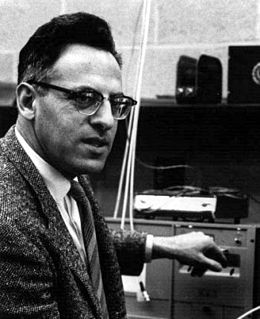 W
WFrederick Reines was an American physicist. He was awarded the 1995 Nobel Prize in Physics for his co-detection of the neutrino with Clyde Cowan in the neutrino experiment. He may be the only scientist in history "so intimately associated with the discovery of an elementary particle and the subsequent thorough investigation of its fundamental properties."
 W
WThe Security Treaty Between the United States and Japan was a treaty signed on 8 September 1951 in San Francisco, California by representatives of the United States and Japan, in conjunction with the Treaty of San Francisco that ended World War II in Asia. The treaty was imposed on Japan by the United States as a condition for ending the Occupation of Japan and restoring Japan's sovereignty as a nation. It had the effect of establishing a long-lasting military alliance between the United States and Japan.
 W
WCyril Stanley Smith was a British metallurgist and historian of science. He is most famous for his work on the Manhattan Project where he was responsible for the production of fissionable metals. A graduate of the University of Birmingham and Massachusetts Institute of Technology (MIT), Smith worked for many years as a research metallurgist at the American Brass Company. During World War II he worked in the Chemical-Metallurgical Division of the Los Alamos Laboratory, where he purified, cast and shaped uranium-235 and plutonium, a metal hitherto available only in microgram amounts, and whose properties were largely unknown. After the war he served on the Atomic Energy Commission's influential General Advisory Committee, and the President's Science Advisory Committee.
 W
WSoviet Nuclear Threat Reduction Act of 1991, 22 U.S.C. § 2551, was chartered to amend the Arms Export Control Act enacting the transfer of Soviet military armaments and ordnances to NATO marking the conclusion of the Cold War. The Act sanctions the Soviet nuclear arsenal displacement shall be in conjunction with the implementation of the Treaty on Conventional Armed Forces in Europe. It funds the Nunn–Lugar Cooperative Threat Reduction program.
 W
WThe Strategic Arms Limitation Talks (SALT) were two rounds of bilateral conferences and corresponding international treaties involving the United States and the Soviet Union. The Cold War superpowers dealt with arms control in two rounds of talks and agreements: SALT I and SALT II.
 W
WSurvival Under Atomic Attack was the title of an official United States government booklet released by the Executive Office of the President, the National Security Resources Board, and the Civil Defense Office. Released at the onset of the Cold War era, the pamphlet was in line with rising fears that the Soviet Union would launch a nuclear attack against the United States, and outlined what to do in the event of an atomic attack.
 W
WOn November 25, 1946, U.S. President Harry S. Truman announced the creation of the President's Temporary Commission on Employee Loyalty (TCEL).
 W
WUnited States nuclear weapons were stored secretly at bases throughout Japan following World War II. Secret agreements between the two governments allowed nuclear weapons to remain in Japan until 1972, to move through Japanese territory, and for the return of the weapons in time of emergency.
 W
WThe United States embargo against Cuba prevents American businesses and businesses with commercial activities in the United States from conducting trade with Cuban interests. It is the most enduring trade embargo in modern history. The US first imposed an embargo on the sale of arms to Cuba on March 14, 1958, during the Fulgencio Batista regime. Again on October 19, 1960, almost two years after the Cuban Revolution had led to the deposition of the Batista regime, the US placed an embargo on exports to Cuba except for food and medicine after Cuba nationalized the US-owned Cuban oil refineries without compensation. On February 7, 1962, the embargo was extended to include almost all exports. The United Nations General Assembly has passed a resolution every year since 1992 demanding the end of the US economic blockade on Cuba, with the US and Israel being the only nations to consistently vote against the resolutions.
 W
WThe United States in the Vietnam War began shortly after the end of World War II in an extremely limited capacity and over a period of 20-years escalated peaking in April 1969 with 543,000 Americans stationed in Vietnam. By the conclusion of the United State's involvement over 3.1 million Americans had been stationed in Vietnam. At home this involvement played a key role in sparking the Civil Rights Movement, Hippie Culture and wide ranging changes in popular culture.
 W
WThe Washington Summit of 1973 was a Cold War-era meeting between United States president Richard Nixon, United States Secretary of State Henry Kissinger, General Secretary of the Communist Party of the Soviet Union Leonid Brezhnev, and Chairman of the Council of Ministers of the Soviet Union Alexei Kosygin that took place June 18–25. The Cold War superpowers met at the White House to discuss issues regarding oceanography, transportation, agricultural research, cultural exchange, and most significantly, nuclear disarmament. The Agreement on the Prevention of Nuclear War was signed during the summit. The summit has been called a high-water mark in détente between the USSR and the US. The summit was originally intended to run until June 26, but ended a day early.
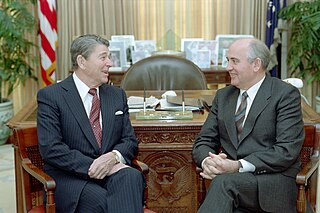 W
WThe Washington Summit of 1987 was a Cold War-era meeting between United States president Ronald Reagan and General Secretary of the Communist Party of the Soviet Union Mikhail Gorbachev that took place on December 8–10. Reagan and Gorbachev discussed regional conflicts in Afghanistan, Central America, and Southern Africa, arms control issues for chemical weapons as well as conventional weapons, the status of START negotiations, and human rights. A notable accomplishment of the Washington Summit was the signing of the Intermediate-Range Nuclear Forces (INF) Treaty.
 W
WThe Wise Men: Six Friends and the World They Made is a non-fiction book authored by Walter Isaacson and Evan Thomas. Published by Simon & Schuster in 1986, it describes the actions of a group of U.S. federal government officials and members of the East Coast foreign policy establishment. Starting in the immediate post-World War II period, the group developed the containment policy of dealing with the Communist bloc during the Cold War. They also helped to craft institutions and initiatives such as NATO, the World Bank, and the Marshall Plan. An updated edition of the book was released in 2012.
 W
WThe "X Article" is an article, formally titled "The Sources of Soviet Conduct", written by George F. Kennan under the pseudonym "X", published in the July 1947 issue of Foreign Affairs magazine. The article widely introduced the term "containment" and advocated for its strategic use against the Soviet Union. The piece expanded on ideas expressed by Kennan in a confidential February 1946 telegram, formally identified by Kennan's State Department number, "511", but informally dubbed the "long telegram" due to its length.